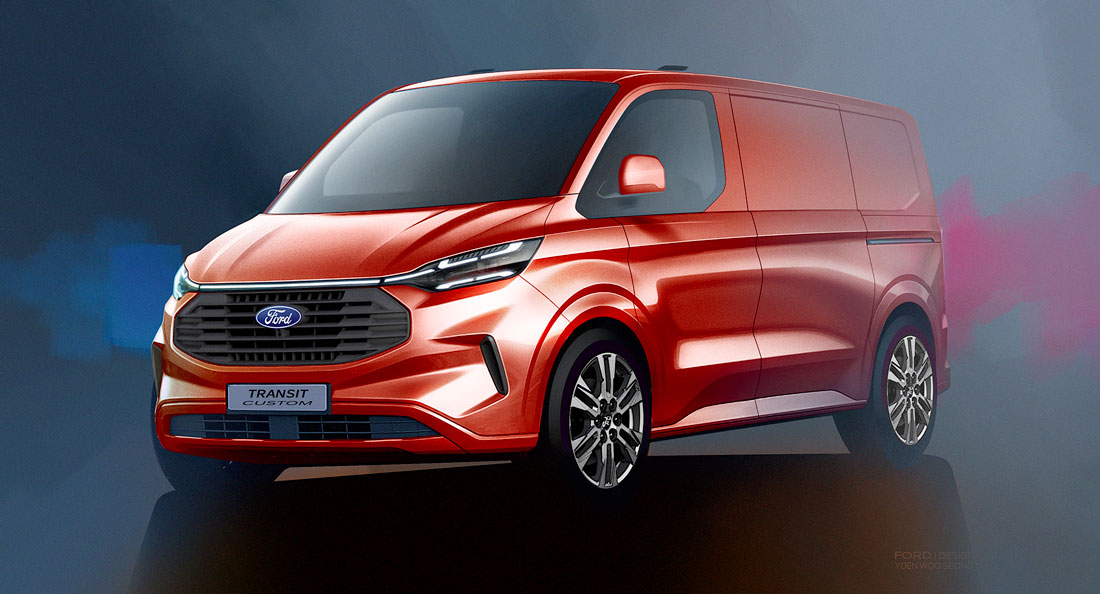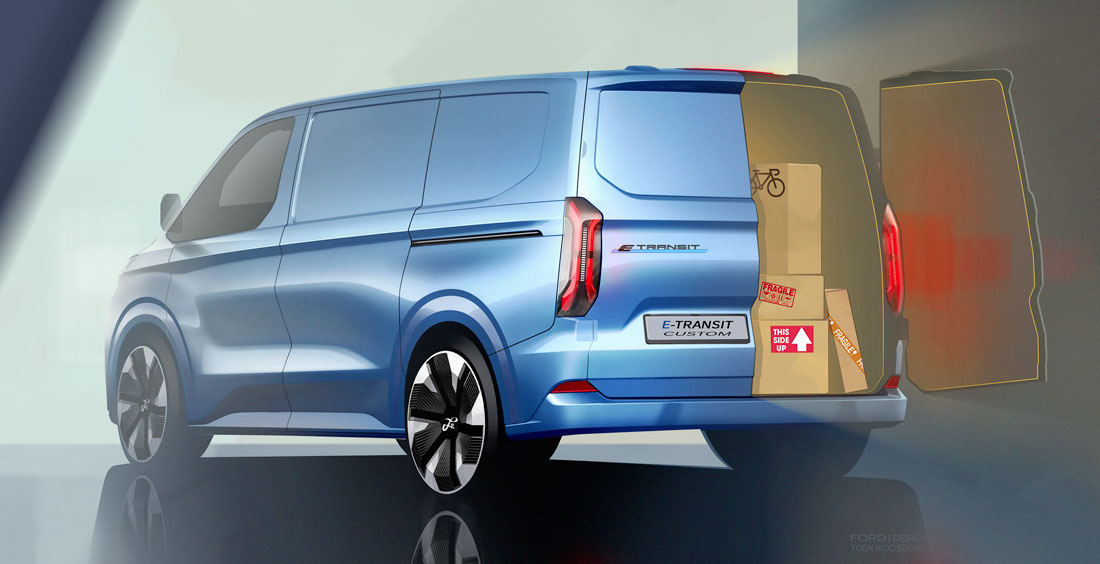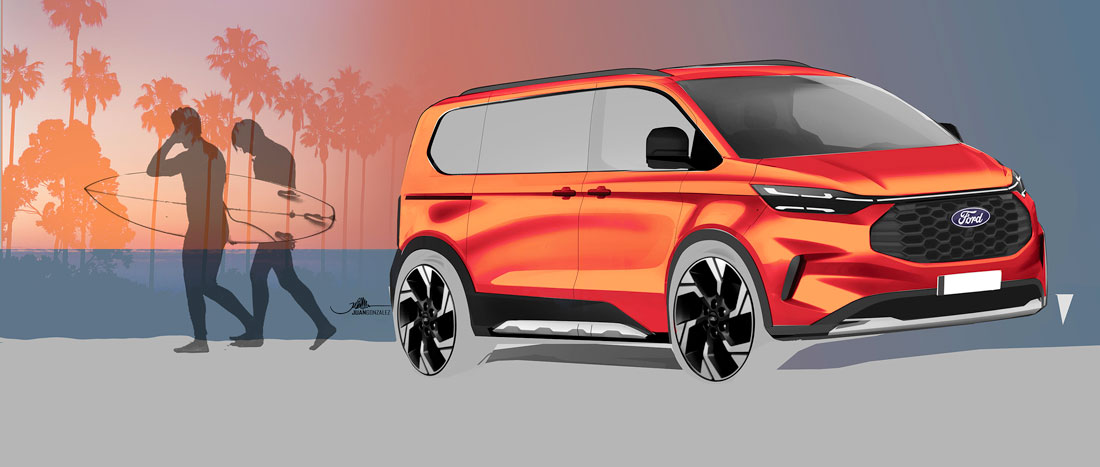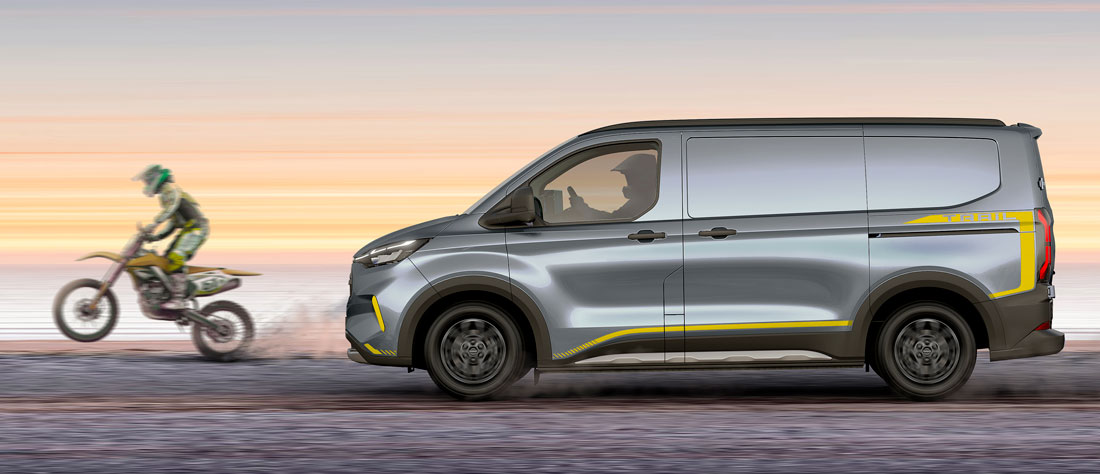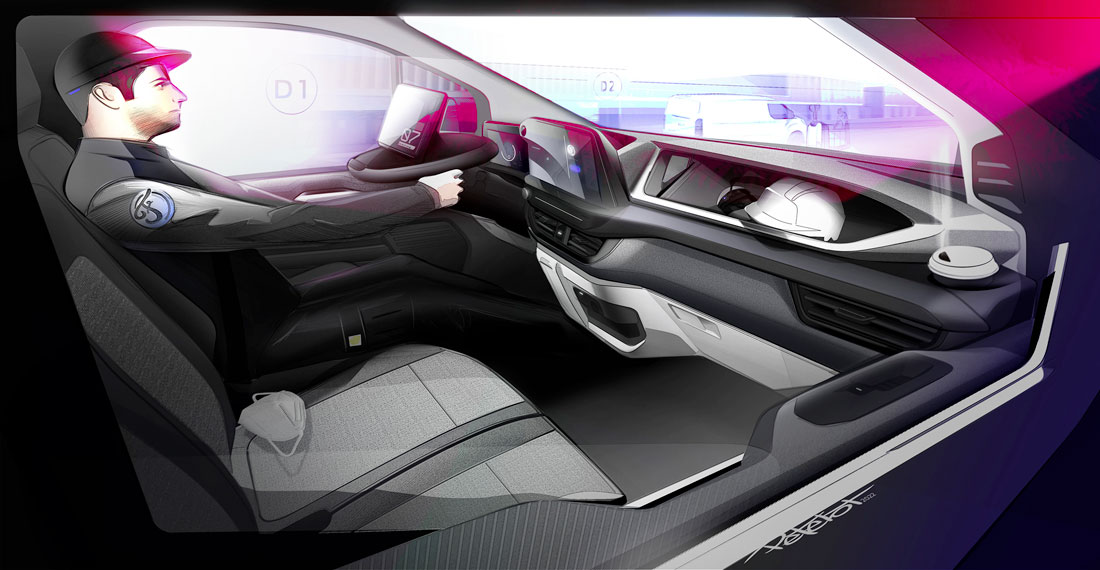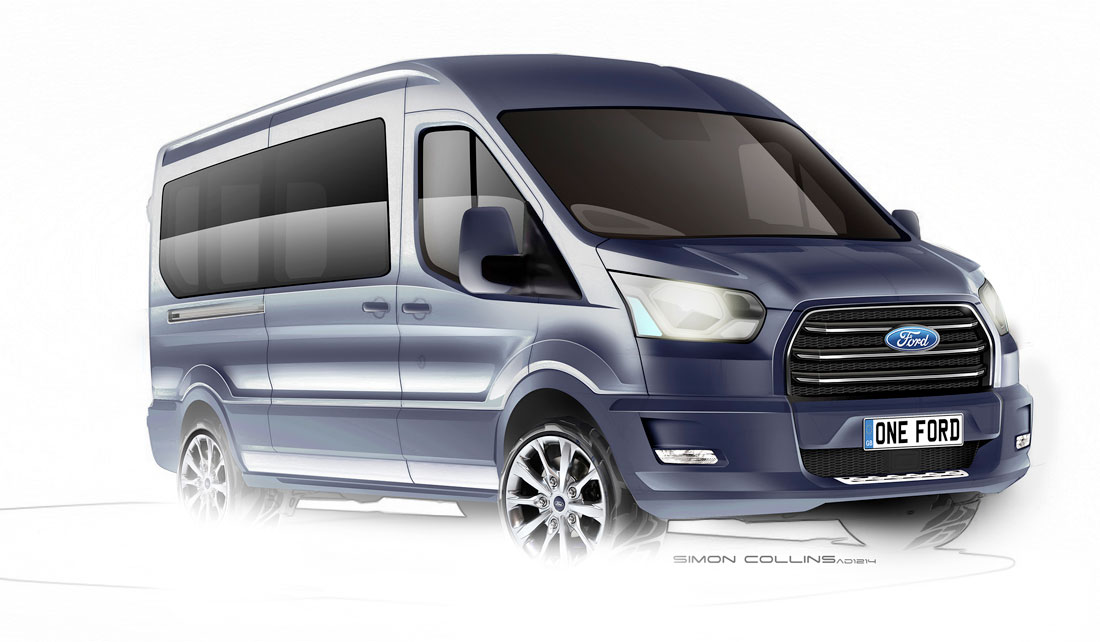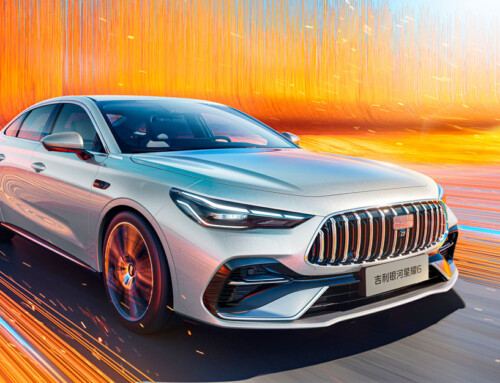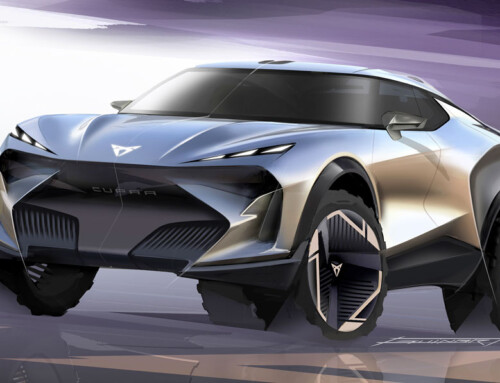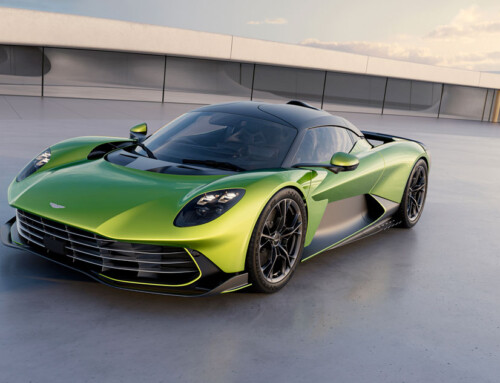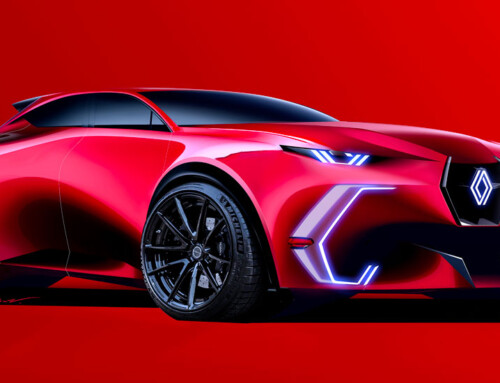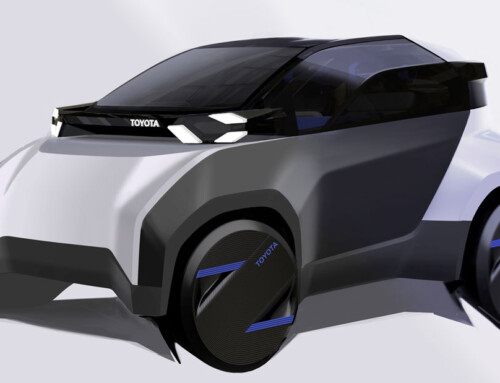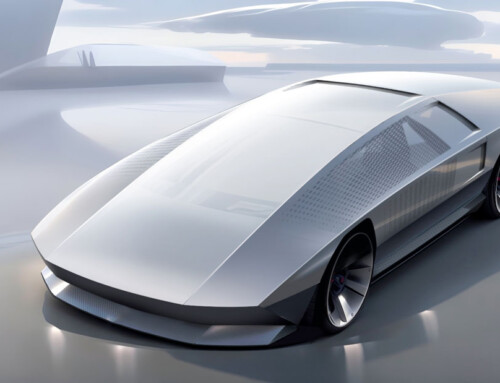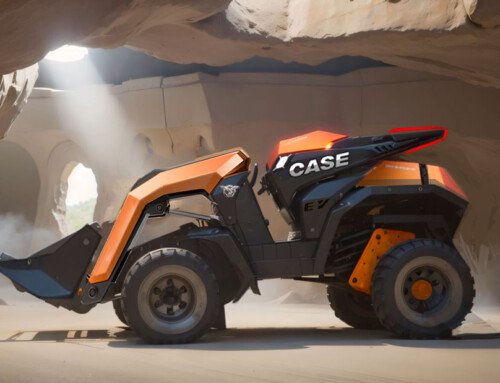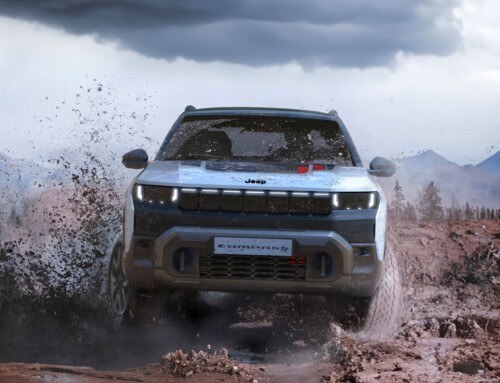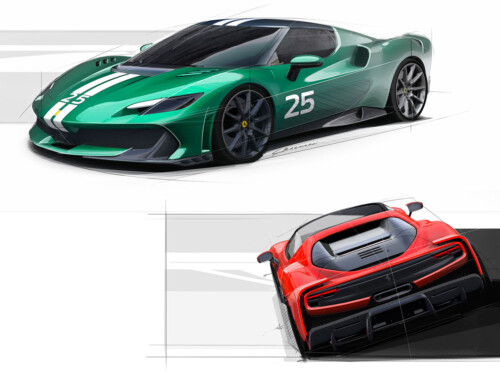Is designing a van like the Transit like designing a car? Yes and no. It is from a strictly technical and, if you will, procedural standpoint: sketches, then on to the computer and models, with one eye on aerodynamics and the other on surface treatment, working with headlights and sculpted shapes as with cars. But then the amount of models comes into play, as Andrew Wolton, Exterior Design Manager at Ford Pro, explains: “It’s much more complicated than a car because it’s a multiplication of models. For a car, at worst, you have to design a four-door sedan, a coupé, and a wagon.
From six to one-hundred-fifty versions
For one of our vans, we have to work with three different lengths, four different heights, and cabins with one or two rows of seats. It’s a modular system, available in eight to 12 models.” Jens Sieber, Chief Designer of Ford Pro, chimes in: “Developing one version and then modifying the parameters for the others would create a corrupt product. We need to ensure, for example, that the aerodynamics work from the start with all the variants.” The original Transit, 60 years ago, launched with six versions. Wolton smiles: “Today, considering Transits that are campers, ambulances, fire engines, and countless other things, we reach up to 150 different solutions.”
Space, work, relaxation
Above all, there’s the search for a balance that’s almost absent in passenger vehicles: that between the comfort of the driver, therefore the space dedicated to them, and the space available for cargo, which is ultimately the fundamental requirement of a commercial vehicle. “So not just function,” explains Sieber, “but a hybrid form of space, work, and relaxation, yet at the same time with a strong character that’s easily identifiable with the product.” “Dynamic yet friendly, never aggressive,” Wolton adds.
Strong, sculptural identity
The Transit, with a design clearly inspired by the world of SUVs, as the passenger versions of the Tourneo series clearly demonstrate, has, in Sieber’s words, “a higher up nose” not only to create an image of capacity but also, stylistically, to facilitate the fusion of front and sides: “Other things like the choice of colours, the proportion of the windows, the character lines give a strong sculptural identity and a clear expression.”
Balance between emotion and function
“All of this is a challenge for designers, much more than starting with two seats and a V12 engine.” “It’s necessary,” Wolton concludes, “to balance emotional content and functional character.”
It’s certainly a problem, because while it’s true that the driver has a cargo to carry, it’s equally true that he feels a sense of pride in his company, and therefore — Sieber continues — “the vehicle’s appearance represents the measure of his personal success.” This is why, according to the designers, customer workshops are so important. They have led to the creation of an entire Transit family, with the Custom now the top-of-the-line model.
Comfort to be efficient
And then there’s the issue of comfort, which is increasingly important. While it’s true that the Transit has inspired some SUVs, it’s equally true that the world of SUVs is now reflected in the Transit, starting with new technologies. But that’s not all, explains Sieber: “The distribution of volumes in the cabin, the driver’s position, the steering, the visibility. And then the way you live in that cabin.” Wolton adds: “To be efficient, a driver must be comfortable. So it’s not just the seats that are important, but also the doors, access to the van, the electric tailgates.”
(Full article in A&D no. 274)

